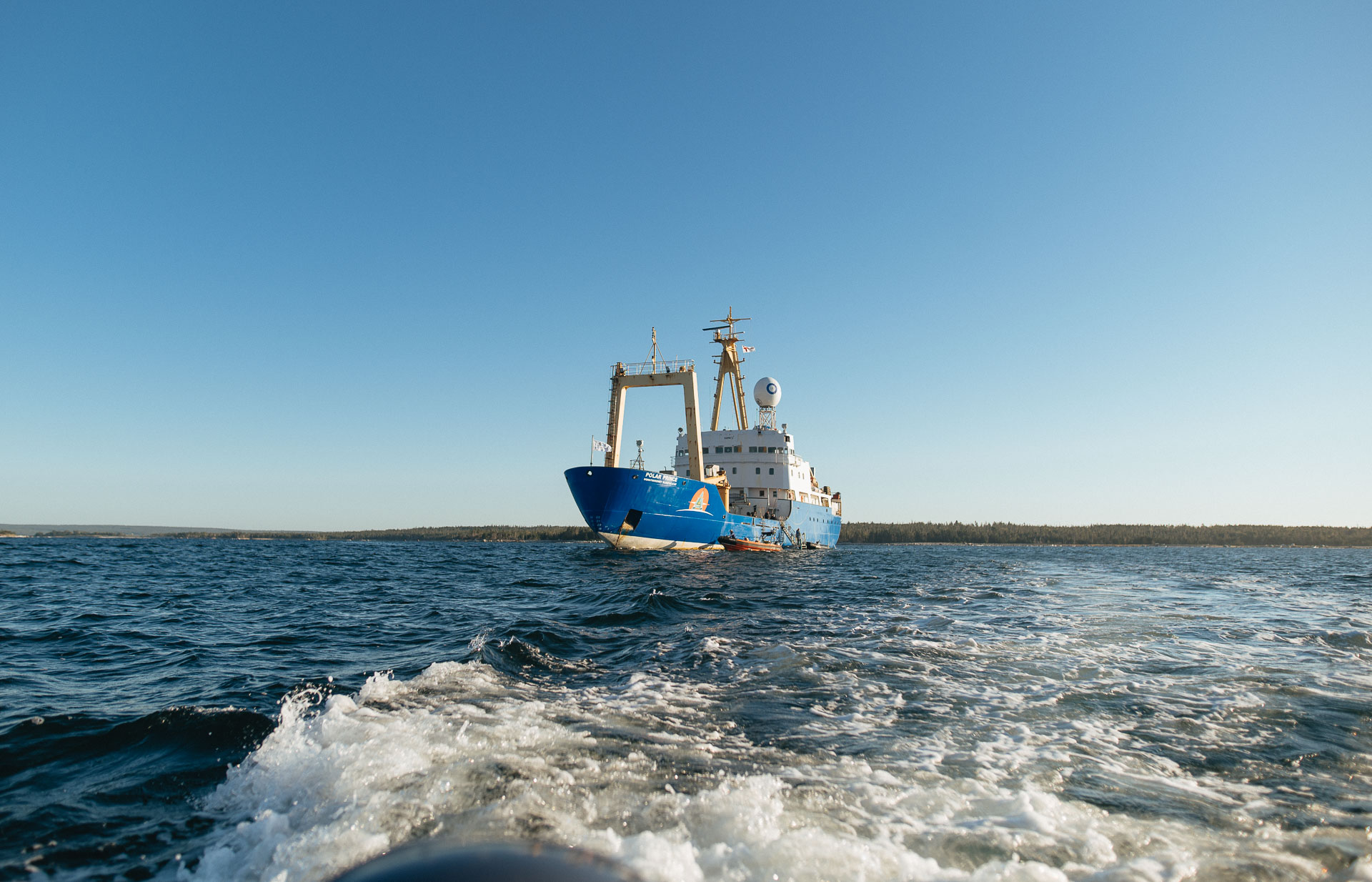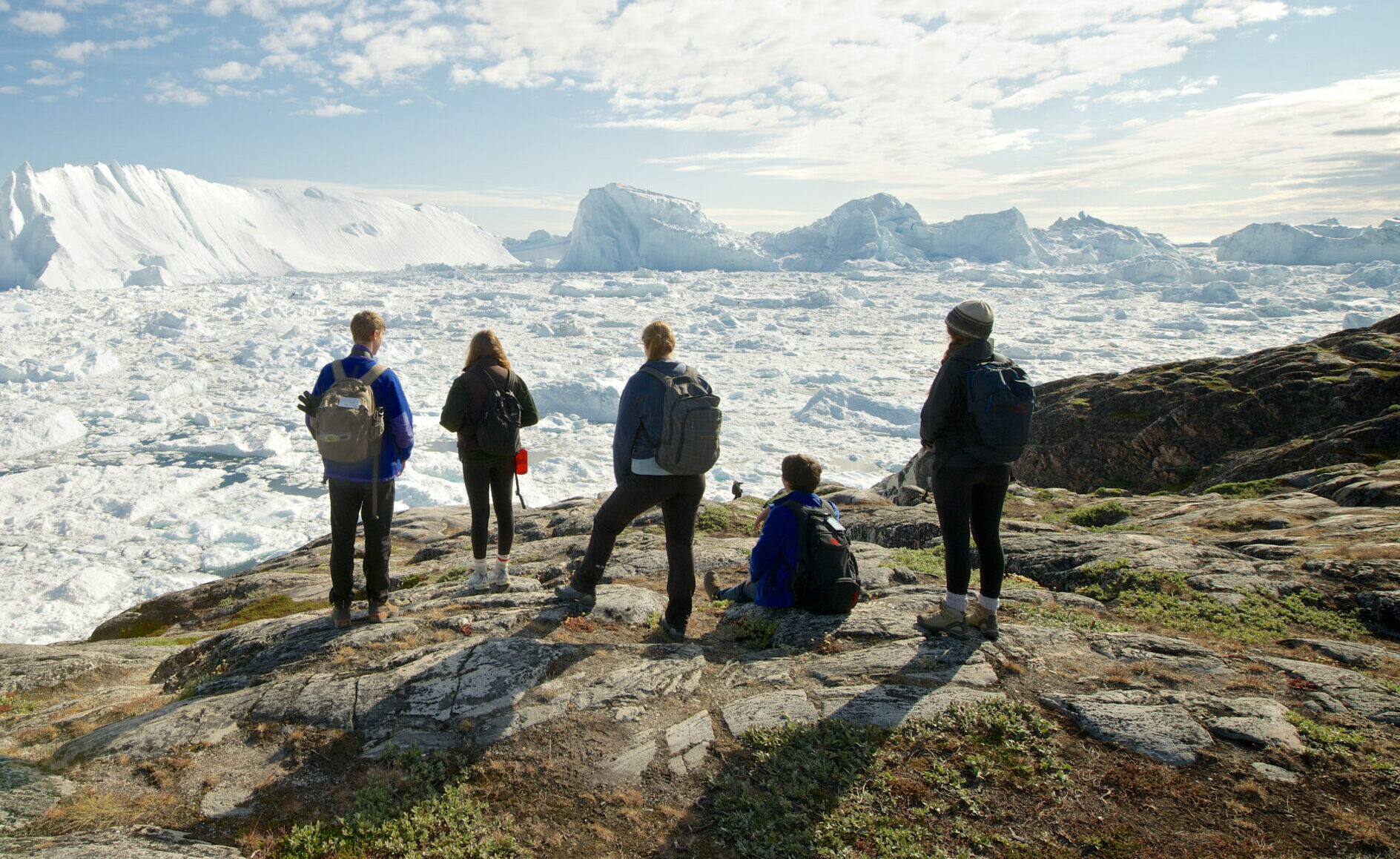Nunatsiavut to Nunavut Expedition 2024: Update Four
“Good morning Students On Ice! Wake up! Polar bear sighting from starboard!”
For most of us, it’s not very often to be awoken to an announcement of a bear sighting and that’s exactly how we started our day just as we anchored in Nachvak Fjord. Upon landing on shore, we saw a polar bear on the hillside and some caribou crossing a small creek. We were sure to stay far from them at a safe distance. Once we landed on shore, a rainstorm arrived but it didn’t stop us from fishing and having a boil up with the arctic char that we caught. To warm up, we made tea from fresh Nachvak Fjord water. Matiusie shared with us how to prepare and make pitsik, a traditional Inuit way of preparing dried fish. It was the coldest morning we’ve had so far and we were absolutely soaked but we had so much fun and the memories we made here will forever be in our expedition hearts.

“I really relate to when Johannes [President of Nunatsiavut] said that the land heals the mind, body and soul. That’s what I felt today.”
– Matiusie, Kangirsuk
During our afternoon sailing, we had a tour of the ship’s bridge, the nerve center of the MV Polar Prince. From this area, the ship is navigated, conned, maneuvered, and otherwise operated in such a manner as to accomplish the goals of the expedition safely and effectively. A few of us even had the chance to steer the ship alongside the captain!

Paul, SOI Educator/Aquatic Biologist, has been hosting various workshops relating to climate change and biology since the first day of the expedition. At each landing and as we continue to sail North, he encourages us to help think about our own actions in relation to climate change.
“Climate change is here and we need to help minimize the time of uncertainty through environmentally-positive action. The amazing diversity of life is hidden everywhere. We just need to look.”
– Paul Hamilton, SOI Educator/Aquatic Biologist
As we set sail from Nachvak Fjord, Elders/SOI Educators Charlotte, Sophie, and Maria led us through a qulliq lighting ceremony (as referred to by a dialect from Rigolet where Charlotte is from), a traditional Inuit oil lamp. It is made of soapstone, used mostly by women for light, heat, and cooking. However in modern day, it is mainly used for ceremonial traditions.

The next morning we were anchored at Ryan’s Bay, an SOI First, and landed on shore for some hiking and a workshop on caribou tracking presented by SOI Expedition Manager Cécile. We learned about the difference between caribou from the Torngats versus other herds in Quebec. The herd in Torngats don’t use a specific calving ground while the caribou herds in George River and Leaf River do. We also discussed the historical ways caribou are tracked, including the use of old school telemetry and, today, GPS collars which are used to study seasonal range distribution and migration patterns.
“It is important to learn that caribou are vital to the ecosystem and Indigenous cultures, highlighting the need for conservation and sustainable practices. ”
– Cécile de Sérigny, SOI Expedition Manager

That afternoon, we set out into the river canyon on Zodiacs in search of waterfalls. This Zodiac cruise was a very special one as it’s rare for visitors to get such an intimate, closeup view of this area. Cruising through the canyon had challenges as the water was shallow in places and the currents were fast. But our very experienced and highly-skilled Zodiac drivers were up to the challenge. At the end of the canyon was a dramatic waterfall, creating a powerful and continuous flow that looked unstoppable. From a distance, we could feel the spray and saw a frothy white foam forming along the canyon walls. It was an awe-inspiring landscape.
“You see that waterfall? It’s so powerful. Grab that power for yourself. You see that power? Use it for yourself.”
– Maria Merkuratsuk, Elder/SOI Educator
Every day has been amazing! Connecting to the land, experiencing the expedition together, and feeling the spirits of the Torngat Mountains has drawn us all closer together. We have now sailed to the midpoint of the Torngat Mountains and continue northward.





